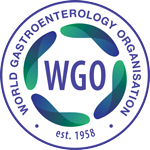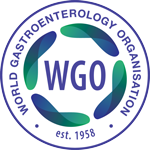 |
Manuel Barreiro-de Acosta, MD, PhD
Department of Gastroenterology and Hepatology
University Hospital of Santiago de Compostela
Santiago de Compostela, Spain
|
| |
|
 |
J. Enrique Domínguez-Muñoz, MD
Department of Gastroenterology and Hepatology
University Hospital of Santiago de Compostela
Santiago de Compostela, Spain
|
All around the world, the incidence and prevalence of inflammatory bowel disease (IBD) have been changing over the last several decades. While there has typically been a North-South gradient in the distribution of IBD with the incidence of IBD being higher in the more developed North countries, the prevalence of these diseases has markedly increased in South countries over the last years which changes the North South gradient.
The etiology of Crohn’s disease (CD) and ulcerative colitis (UC) is largely unknown, but environmental factors are widely accepted to play a relevant etiopathogenic role. In fact, industrialization and high socioeconomic status are well known risk factors for IBD. A recent case-control study with a significant number of IBD patients showed that air pollution exposure was not associated with the incidence of IBD, but that residential exposure to SO2 and NO2 may increase the risk of early-onset UC and CD, respectively 1.
Population migratory movements have existed for centuries, but recent changes such as globalization, deepening socioeconomical differences among countries, significant increases in the number and frequency of long-distance travels, and increased ease of moving from one country to another have helped to increase the migration of people around the globe. In addition, migratory movements can now be more easily measured and evaluated. Since human migration tend to follow the rule of moving from developing to developed countries, and thus from countries with a low prevalence of IBD to those with a high prevalence of IBD, the question arises of how migratory movements do modify the risk of IBD.
The first data about the impact of migration on IBD came from British studies of migrants from Asia to Europe. In a study of Bangladeshi immigrants who settled in East London, CD rates were significantly higher in Bangladeshis under 20 years of age compared with relatives who remained in Bangladesh 2. In another British study of UC patients, authors showed that second generation South-Asian immigrants had a higher risk of being diagnosed with UC than first generation immigrants 3. Figures for second generation South-Asian immigrants were similar to those of the UK Caucasian population, thus supporting the significant role of environmental factors in the etiopathogenesis of IBD. Similar data have been reported on Hispanic migrants to the USA (Miami, Florida) 4. In that study, the age of IBD diagnosis in the second generation Hispanics, who were born in USA, was lower than in those people who were born in their original Hispanic country.
A pediatric population is probably the most appropriate group for evaluating all of these epidemiological changes. In a Canadian study, authors observed that the diagnosis of IBD in second generation South Asian children was higher than in the Caucasian population, confirming the results previously shown 5.
In our population of the North-West of Spain, we evaluated the influence of migratory movements in IBD diagnosis in a prospective case-control study 6. This was especially interesting since people from North-West Spain who migrated decades ago after the Spanish civil war (1936-1939), mainly to Western European and Latin American countries, moved recently back to their original towns. We hypothesized that people who migrated to more industrialized countries than Spain would have a higher risk of developing IBD than those migrating to less industrialized countries or to those remaining in Spain. A total of 242 patients diagnosed with IBD over the last 10 years were evaluated together with the same number of healthy, unrelated controls matched by ethnicity, sex, age and smoking habits, family size and study levels, and with no family history of IBD. All patients and controls were interviewed by the same researcher about the countries where they lived before being diagnosed with IBD and for how long they stayed in those countries. We found that people who migrated to Western Europe had a higher risk of developing IBD than people remaining in Spain. These data showed for the first time the association of IBD with migration within Europe. In contrast, people who migrated to Latin America, and thus to less or similarly industrialized countries than Spain, did not have an increased the risk of developing IBD.
A relevant finding in our study was that people who migrated to Western European countries had an especially high risk for UC compared to CD. Once again, the etiologies of CD and UC seem to be different, with genetic factors being more important in CD and environmental factors being possibly more relevant in UC.
All these studies support the role of environmental factors in the etiopathogenesis of IBD. They also underline the relevance of a globalized world in modifying the epidemiology of diseases in which environment plays a role. Future research should focus on specific environmental factors related to industrialization and development that can play a role in the etiopathogenesis of IBD, and to what extent public health initiatives aimed at modifying them may reduce the risk of these diseases.
References
- Ananthakrishnan AN, McGinley EL, Binion DG, Saeian K. Ambient air pollution correlates with hospitalizations for inflammatory bowel disease: an ecologic analysis. Inflamm Bowel Dis. 2011;17:1138-45.
- Probert CS, Jayanthi V, Pollock DJ, Baithun SI, Mayberry JF, Rampton DS. Crohn’s disease in Bangladeshis and Europeans in Britain: an epidemiological comparison in Tower Hamlets. Postgrad Med J. 1992;68:914-20.
- Carr I, Mayberry JF. The effects of migration on ulcerative colitis: a three-year prospective study among Europeans and first- and second- generation South Asians in Leicester (1991-1994). Am J Gastroenterol. 1999;94:2918-22.
- Damas OM, Jahann DA, Reznik R, McCauley JL, Tamariz L, Deshpande AR, et al. Phenotypic manifestations of inflammatory bowel disease differ between Hispanics and non-Hispanic whites: results of a large cohort study. Am J Gastroenterol. 2013;108:231-9.
- Pinsk V, Lemberg DA, Grewal K, Barker CC, Schreiber RA, Jacobson K. Inflammatory bowel disease in the South Asian pediatric population of British Columbia. Am J Gastroenterol. 2007;102:1077-83.
- Barreiro-de Acosta M, Alvarez Castro A, Souto R, Iglesias M, Lorenzo A, Dominguez-Muñoz JE. Emigration to western industrialized countries: A risk factor for developing inflammatory bowel disease. J Crohns Colitis. 2011;5:566-9.



